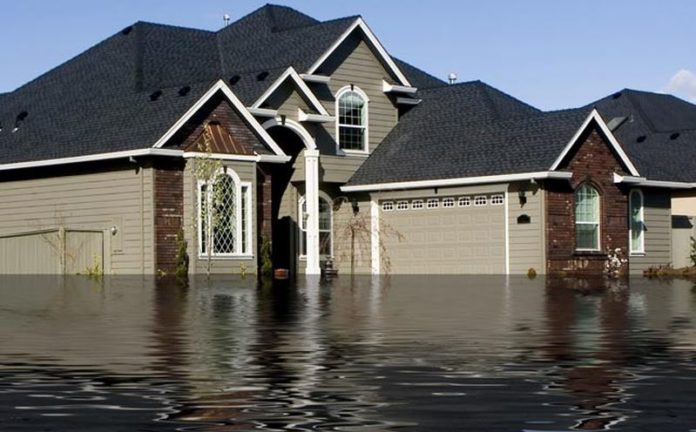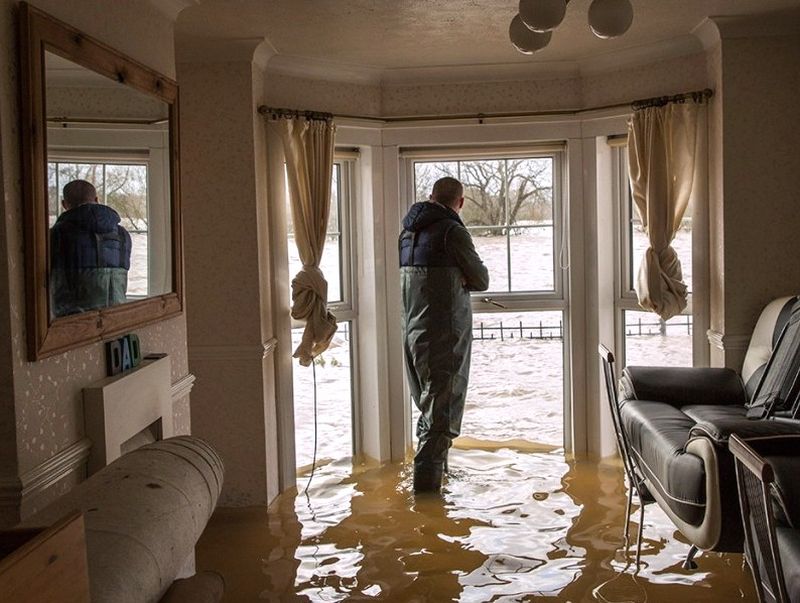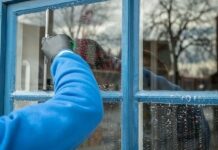
Flood cleanup is both physically and emotionally taxing. Seeing your home underwater can be shocking and hard to cope with. There are many precautions you and your family should take to ensure your safety as you return to your house. Even after your home has been cleared for re-entry, there are several dangers that could be present.
1. Structural Damage
The first thing you should look for when you re-enter your house is structural damage that may make it unsafe to be inside. Begin by surveying the exterior perimeter of your home and then making your way inside. Check for buckled walls or floors as well as holes and debris such as broken glass.

Removing water from a basement too quickly can actually cause structural damage that wasn’t there before. If the ground outside is saturated, it’s heavy and pressing against the walls of your home. Rushing to remove water too quickly can create negative pressure in the home and cause the walls to crack or even collapse.
2. Mould & Mildew
Mould and mildew grow quickly after a flood. Drying out your home within 48 hours can reduce the likelihood of mold growth, but it’s also important that you document the damage for your insurance adjuster before you begin the cleanup. You can click here to learn more about documenting the damage for your insurance provider and dealing with your insurance adjuster, including creating a Schedule of Loss.
Start removing water with pumps. Once the water has been removed, disinfect and wash surfaces, then begin drying the structure and contents using a water extraction vacuum and/or dehumidification.
3. Air Quality

Flood water can also cause problems with the air quality in your home. Inhaling mould and mildew has adverse health effects including throat and nasal irritation, eye irritation, allergic reactions, skin irritation, coughing and wheezing, or have long-term repercussions such as chronic lung illnesses, obstructive lung disease, and infections in the lungs.
4. Electricity
Live electricity and water don’t mix. Head toward the power breaker in your home and make sure it has been shut off, even if there is no power to your house. You don’t want to be caught in standing water if power is restored. As you survey the exterior of your home, check for downed power lines and alert the appropriate authorities.
The water removal process often involves equipment that relies on extension cords. Take care to keep these off the damp ground as you pump the water out.
5. Contaminated Water

Urban floods often overflow sewage systems and the water in your basement or on the streets can end up a mixture of flood water and raw sewage. Flood waters often contain bacteria, viruses, and parasites that can cause gastrointestinal infections if consumed. These include stomach-aches, vomiting, fever, and diarrhea. In addition to GI infections, exposure to contaminated water can cause infections in cuts and sores. Be sure to thoroughly wash cuts and sores with soap and antibiotics. Handle contaminated objects carefully and avoid tap water until authorities give it the okay.
Be mindful of your safety and your family’s as you return to your house after a flood.














